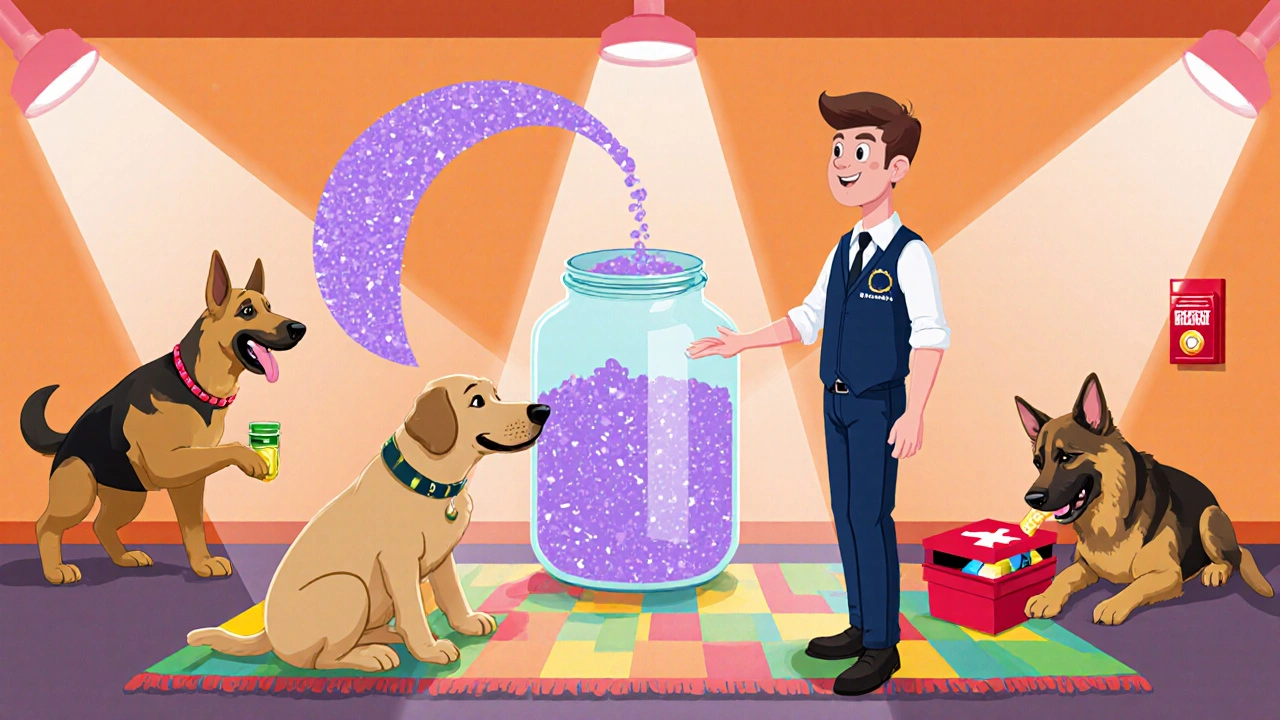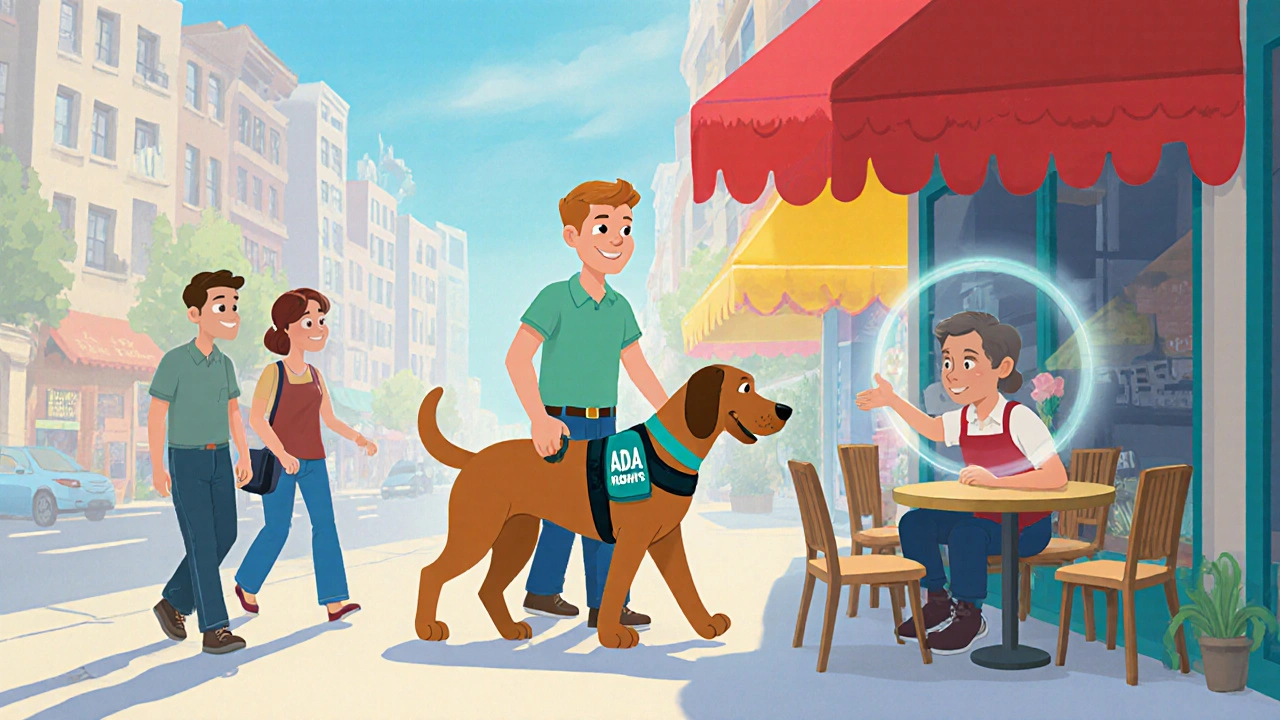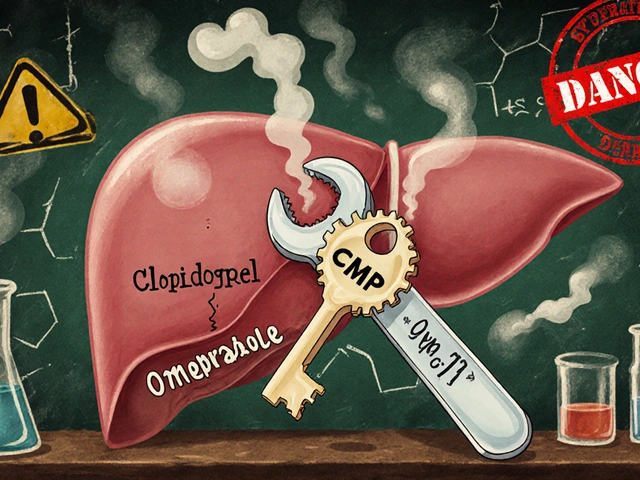Service Animal Cost Calculator
Calculate Your Service Animal Costs
Get an estimate of the financial investment needed for a service animal to help manage myoclonic seizures.
Estimated Total Cost
Living with myoclonic seizures can feel like walking a tightrope that never stops shaking. One day you’re fine, the next a sudden jerking motion throws you off balance. What if there was a trusted companion that could spot the warning signs, provide calm, and even help you get medical help fast? That’s where service animals step in. In this guide we’ll explore what myoclonic seizures are, how a service animal can become an extra set of hands (or paws), and the practical steps to make the partnership work.
Understanding Myoclonic Seizures
Myoclonic seizure is a type of epileptic event marked by brief, shock‑like jerks of a muscle or a group of muscles. Unlike a tonic‑clonic seizure that lasts minutes, a myoclonic episode can last just a fraction of a second but still cause falls, injuries, or loss of awareness. They often appear in clusters, especially after sleep deprivation or stress.
People with juvenile myoclonic epilepsy (JME) are the most common group, but anyone with an underlying brain condition can experience these jerks. The diagnosis usually involves an EEG (electroencephalogram) that shows characteristic spike‑and‑wave patterns, and a neurologist will tailor medication-often valproic acid or levetiracetam-to keep the storms at bay.
What Are Service Animals?
Service animal is a dog, or in rare cases another species, trained to perform tasks that mitigate a disability for a person under the Americans with Disabilities Act (ADA). Unlike a pet, a service animal has a legal right to accompany its handler in public spaces, housing, and on transportation. The most relevant type for seizure disorders is the seizure alert dog.
Seizure alerts can be “predictive” (the dog senses subtle changes before a seizure) or “reactive” (the dog responds after a seizure starts). Both can save lives by fetching medication, calling emergency services, or simply keeping the person safe from injury.
How Service Animals Support Myoclonic Seizure Patients
- Early warning: Some dogs can detect changes in scent or behavior that precede a myoclonic jerk. They may nudge, paw, or bark to give the handler a heads‑up.
- Physical safety: During a seizure, the dog can guide the person away from hazards, cushion falls, or place its body under the head to protect it.
- Medication retrieval: Trained to fetch a pre‑filled pillbox or a rescue inhaler, the dog can bring the medication within seconds.
- Emergency communication: Some dogs learn to press a medical alert button or retrieve a phone to call 911.
- Emotional calm: The presence of a calm, trained animal reduces stress, which is a known trigger for seizure clusters.

Training and Certification Process
Training a seizure alert dog is a multi‑step journey involving a Veterinary behaviorist and a professional trainer. Here’s a typical roadmap:
- Selection: Breeds like Labrador Retrievers, Golden Retrievers, and German Shepherds are common because of their scenting ability and temperament.
- Basic obedience: The dog learns sit, stay, heel, and recall-foundation for any service task.
- Scent detection training: The dog is taught to recognize the specific chemical changes that occur before a seizure. This involves exposure to a sample of the handler’s sweat or breath during a controlled episode.
- Task training: The dog practices nudging, fetching medication, and pressing emergency buttons.
- Public access training: The animal learns to remain unobtrusive in crowded places, restaurants, or public transport.
- Certification: While the ADA does not require a formal certificate, many organizations (e.g., Assistance Dogs International) provide a letter confirming the animal’s training and task list.
The whole process can take 12‑18 months and costs anywhere from $15,000 to $30,000, depending on the training program.
Choosing the Right Service Animal
| Animal Type | Primary Function | Average Training Hours | Typical Cost (USD) |
|---|---|---|---|
| Dog (Labrador/Golden) | Alert, retrieve medication, emergency calls | 1,200‑1,500 | 15,000‑30,000 |
| Dog (German Shepherd) | Alert, physical protection | 1,300‑1,600 | 18,000‑35,000 |
| Miniature horse | Physical support for mobility | 1,500‑2,000 | 20,000‑40,000 |
Dogs dominate the field because they’re agile, can be housed in most homes, and have a strong scent‑detection instinct. Miniature horses are an option for people who need a larger animal for stability, but they require more space and specialized care.

Integrating a Service Animal into Daily Life
Getting a service animal is just the beginning. Successful integration involves a Seizure action plan that outlines who does what when a myoclonic episode occurs.
- Establish a routine: Feed, walk, and train at the same times each day. Predictable schedules lower anxiety for both handler and dog.
- Practice response drills: Simulate a seizure and have the dog perform its tasks-fetch medication, bring a phone, or lie next to you.
- Home safety check: Secure sharp corners, install non‑slip mats, and keep the dog’s harness within reach.
- Medical coordination: Share the dog’s role with your neurologist and emergency contacts. Some doctors recommend a backup plan in case the dog is unavailable.
- Public etiquette: When entering a store, politely let staff know you have a service animal and its tasks. The ADA protects your right, but a brief explanation helps avoid confusion.
Remember that the animal also needs downtime. Regular vet check‑ups, a balanced diet, and mental enrichment (like puzzle toys) keep the dog healthy and motivated.
Common Challenges and Solutions
Even the best partnerships hit snags. Here are frequent issues and how to fix them:
- False alerts: Early in training, a dog may over‑react. Consistent reinforcement and reducing exposure to unrelated scents helps fine‑tune the response.
- Dog fatigue: Long days can wear out a service dog. Schedule short rest periods and rotate tasks if possible.
- Public pushback: Some people still doubt a dog’s legitimacy. Carry a copy of the trainer’s letter and stay calm; most venues will comply.
- Medical emergencies when the dog is unavailable: Keep a spare medication kit and a phone‑activated emergency alert device as a backup.
Frequently Asked Questions
Can a service dog predict myoclonic seizures?
Some dogs learn to pick up on subtle physiological changes-like a shift in scent or heart rate-occurring seconds to minutes before a seizure. While prediction isn’t guaranteed for every person, many handlers report that early warnings reduce injury risk.
Do I need a doctor’s note to get a service animal?
The ADA does not require a formal letter, but most training organizations ask for a physician’s confirmation of the disability and the specific tasks the animal will perform. Having a note speeds up the process and helps with housing or travel accommodations.
What if I live in a rental apartment that doesn’t allow pets?
Service animals are not considered pets under the law. Landlords must make reasonable accommodations, even in “no‑pet” buildings, unless the animal poses a direct threat to health or safety.
How often should my service dog see a vet?
At least once a year for a full health check, plus any time the dog shows signs of injury, illness, or stress. Regular dental cleanings and parasite prevention are also essential.
Can other family members handle the service dog?
Yes. While the handler is the primary partner, any trained family member can assist with tasks like fetching medication or calling emergency services, as long as the dog’s training is respected.
Living with myoclonic seizures is a daily balancing act, but a well‑trained service animal can turn that wobble into steadier steps. From early alerts to emergency assistance, these four‑legged allies add both safety and peace of mind. If you think a service dog might fit your life, start by talking to your neurologist and a reputable training organization. The right partnership could change the rhythm of your days for the better.






Comments
Jhoan Farrell
October 21, 2025
A well‑trained service dog can literally fetch your meds in seconds 😊.
Jill Raney
November 2, 2025
The silent partnership between humans and dogs is being downplayed by the pharmaceutical giants who profit from our reliance on pills; they whisper that “animals can’t truly predict seizures” while their labs churn out new drugs. What they don’t admit is that a dog’s nose can sniff out biochemical shifts long before a myoclonic jerk, offering a natural early‑warning system that could cut medication dosages. This hidden truth is why you’ll rarely see mainstream media championing service animals over expensive treatments. The FDA’s “neutral” stance masks the lobby’s influence, and the average patient is left juggling costly medication regimens with a dog that could be a free, living detector. 🕵️♀️💊
Emmy Segerqvist
November 14, 2025
Wow!!! The idea that a dog can sense a seizure before it happens is like something out of a sci‑fi movie!!! Imagine the relief of not being caught off‑guard in the middle of the night!!! This isn’t just cute fluff; it’s a lifesaver!!!
Trudy Callahan
November 25, 2025
The bond between a person and a service animal transcends mere utility; it becomes a shared rhythm of existence.
The tapestry of daily life, each gentle bark or nudging nudge weaves a thread of anticipation against the chaotic spikes of myoclonic tremors.
When the brain’s electrical storm threatens to erupt, the dog, attuned to subtle olfactory cues, acts as a sentinel at the gate of consciousness.
This sentinel does not merely alert; it mitigates risk by guiding the handler away from hazardous edges, a choreography of protection rehearsed in countless drills.
The philosophical implication is profound: a non‑human being can, through scent, read the hidden language of our biochemistry, a language we have yet to fully decipher.
Such a capacity challenges the Cartesian dualism that separates mind and body, suggesting instead a continuum where external organisms participate in our internal equilibrium.
Moreover, the act of retrieving medication or pressing an emergency button becomes a dialogue, a silent conversation that bridges species.
One might argue that this interspecies communication redefines the concept of agency, granting the animal a participatory role in human health decisions.
Yet, the training process, with its 1,200 to 1,600 hours of disciplined repetition, also reflects the human desire to sculpt purpose into raw potential.
The cost, ranging from fifteen to thirty thousand dollars, is not merely a price tag but an investment in a partnership that may save lives.
Critics who dismiss the dog’s predictive abilities often cling to reductionist neuroscience, ignoring the emergent properties of complex systems.
In practical terms, integrating a service dog into daily routines requires meticulous planning: securing non‑slip mats, establishing medication caches, and rehearsing response drills.
The emotional calm the animal provides acts as a counterbalance to stress, the very trigger that can amplify seizure clusters.
Ultimately, the presence of a service dog invites a reevaluation of independence, as reliance on a companion does not diminish autonomy but rather reshapes it.
The symphony of human‑canine cooperation thus becomes a testament to resilience, a living proof that partnership can indeed tame the unpredictable tides of neurological disorder.
Caleb Burbach
December 7, 2025
Training a seizure‑alert dog is a rigorous marathon, not a weekend hobby, and the payoff is undeniable-rapid medication delivery, early warning, and a steadfast guardian. Your neurologist will applaud any reduction in seizure frequency, and the dog's presence can slash emergency room visits dramatically. Stay disciplined with daily obedience drills, and remember that consistency breeds confidence in both handler and animal. The journey demands effort, but the payoff is a life saved more times than you can count. 💪🚀
Write a comment